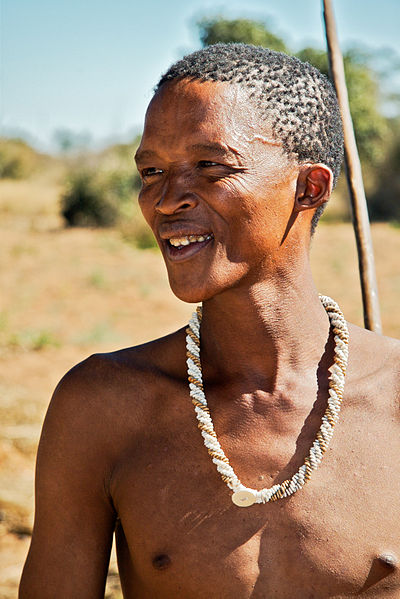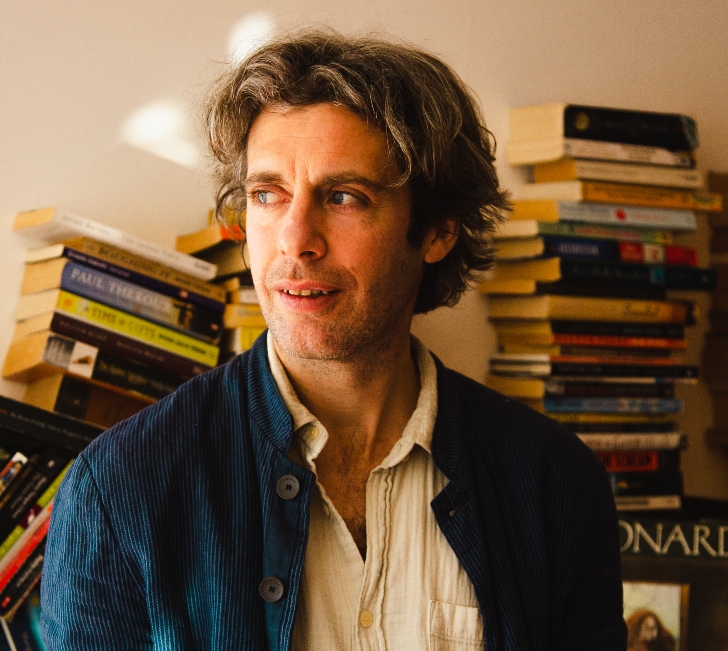
“Good day! I saw you from far away and I am starving to death!”
“Good day! I was dead but now that I have seen you I live again!”
Thus the Bushmen pygmies, of the Kalahari greeted each other. The oldest of all peoples in the world, they lived a nomadic life across Southern Africa for thousands of years and are our best link to humanity’s past. Theyve since been forced to settle and take up agriculture but in Laurens van Der Post’s book, The Lost world of the Kalahari Bushmen, the poetry of their way of life is brought alive for us.
We learn how the Bushmen seem to be another species with certain oddities of their physique – the men are born, live and die with a semi-erection, and the women have a piece of skin that flaps down over their genitalia. And when they eat, they can eat more than anyone as their stomach expands in both directions to make the most of times of plenty. They stood 5ft tall and were intensely conscious of the fact. It would have been foolish to point out how small they were, hence the importance of the greeting, making clear that you saw them from far away, tall as they were. And yet the Dutch invaders must have seemed like giants to the Bushmen, and were depicted as such in their cave paintings.
The Bushmen were great artists, scaling the rocks with horns full of paint to daub the walls with pictures of the animals that were at the heart of their lives. They also made music with bamboo flutes and a kind of cello made from the shell of a tortoise. But most of all they danced; they danced birth, marriage, death; they danced the hunt, the rising of the sun, they danced the moon under the moon.
The Bushmen were hated by the Dutch settlers for hunting their cattle but they only did that because they had been chased out from their own lands in the first place. The Protestant Dutch despised the Bushmen for not having property or jobs and eary on they tried to impose a tax upon them so they would be forced to find work to raise the money.

Who needs money?
They dug pits covered with branches with sharpened sticks below to trap ‘old auntie sea cow’ – the hippo. They hunted giraffe by hiding in a bush and catching the reflection of the sun with a piece of glass; according to the Bushmen all giraffe were women and they simply had to come closer to see what was so pretty. They would hunt elephants and rhino by sending a man to run among them, singing songs for protection all the while, until one was angry enough to chase him and then the rest of the tribe would jump out and cut the animal’s tendons. They even chased lions away from their kills by dressing up with branches and feathers and approaching as a group making terrible noises.
But most of all they loved honey and would do anything to get it. They climbed up high on steep rocks where only the baboons – ‘the people who sit on their heels’ – dared to go. At sunset when bees made… a beeline straight back to their nests, the Bushmen ran after them until even their excellent eyesight lost them, then they would mark the place and return the next day to resume the trail. Knowledge of nests was handed down from father to son.
Sometimes they were helped, however, by the honey bird, a creature that came fluttering over them excitedly, eager to lead them to where some bees had made their home in a tree or in some rocks. ‘Look, look, o person with wings!’ they would cry, ‘gathering my things and quickly I come!’ Then they followed the bird and made a fire outside the bee’s nest to make them drowsy – for the African bee is the most vicious and aggressive of all bees in the world – then they’d take out the honey and share it with their friend. The honey bird, incidentally, would enlist the help of any human but not if it could find its friend, the ratel, first The ratel was a kind of badger with a thick skin immune to the stings of bees. But its nose and eyes were still vulnerable and, as it didn’t know how to make fire, it would instead stick its behind inside the nest and release a smell so powerful that the bees would drop to the ground, helpless to prevent the theft of their honey.
In our sanitised modern age of plenty the stories of hunting such beautiful African animals might provoke emotion but hunting was the stuff of life for tens of thousands of years in Africa and, like the Native Americans, the Bushmen knew and honoured the animals they killed. They painted them, they danced them and animals of Africa were at the essence of their mythology. Where the animals went they followed and in the dry parts of summer they ran after the distant flashes of lightning in the sky that promised the breaking of the rains. For where there was water there would be life.
The tragedy is the the Bushmen came to be hunted in their turn by other tribes and then by the Dutch settlers who saw them as no better than animals themselves. They were driven out of their homelands from all directions and though they fought back gallantly with their poisoned arrows, their weapons were no match for the guns of the settlers on horseback. Yet even in death the Bushmen would cover their faces with a cloth so their enemies might not see the agony on their faces. There was one famous last stand in some caves where a young Dutch boy was sent to speak to the last Bushman who was holding out, to beg him to surrender against the impossible odds. The warrior puffed up his chest and declared ‘Tell your chief that not only is my quiver full of arrows but I shall fight for as long as I have life left.” When his last arrow was spent and the enemy drew close, he stood up on the ridge, gave a defiant shout and then leapt to his death on the rocks below.
The Bushmen still exist but their nomadic way of life has all but vanished. Laurens van de Post was a amateur athropologist who grew up in South Africa with a Bushman nanny, and his love for the Bushmen led him to make a BBC-funded expedition out to the Kalahari in search of them. Today Van der Post’s work is largely discredited for being superficial and romantic but it was he who awakened us to the beauty of the Bushmen’s way of life and gave voice to their spirit.
Who, for instance, could not be moved to hear of a mother with her baby who walked away from the fire one night to have a conversation with a star, to ask it to take a piece of her baby’s heart and give it in return the heart of a star, the heart of a hunter – for all stars were hunters, did we not know that? the Bushmen asked in amazement. Listen to them as they cry to their dogs! And the bigger a star was the better hunter he was (for the more he ate) and they reserved their greatest respect for Venus, the star that came striding across the horizon before dawn with his bow in his hand.
Who would not be moved to laughter to learn how the Bushmen made romance? A man would sneak up behind the woman he wanted to marry and with a miniature bow shoot a little arrow into her ass. Turning around to see who was courting her, she either plucked it out and threw it to the side, or else let it stay there and walk off, letting the man know that he could come to her at night.
Who could not be moved by a people who laughed like the Bushmen? They would even laugh when something bad happened to you so that you might get over it faster and to appease the evil forces that had caused the event in the first place. And when they laughed they often lay down first so as not to hurt themselves when they succame to the giggles.
Smaller than us, they seemed childlike in their wonder at the world. Laurens van der Post records seeing his guide, Dabe, a domesticated Bushman, stand in front of a mirror with his new ostrich feather hat and declare:
‘Who is he with so tall a shadow before him?
whose shadow is this that starts at sunrise and ends at sunset?
who is he who travels for far from his shelter and his people?
who is he who has an ostrich feather in his hat?
why, Dabe, you child of a bushman, it is you!’
But they understood life and death far better than us because they lived so close to it. Imagine never having seen a tap in all your life. The Bushmen found water in their sip wells: secret locations in the desert where they could lower long bamboo poles and suck up water that they then stored in ostrich shells.
Or imagine having to leave behind your grandparents because they were no longer strong enough to run across the desert with the tribe in the summer months. Building them a hut, the Bushmen left them with some food and water, and the old would wait there until a leopard finally broke in.
And who would rather not be buried as a Bushman was? Covered in sand, their faces turned to the east, bow and arrow by their side and an ostrich shell of water, the most precious currency in the desert, for the journey ahead…







